
“Eye for an Eye” isn’t a landmark episode in a way that makes it stands out individually as being much better than an average episode of Vikings. Yet, as a follow-up to last week’s “Treachery,” the series has now moved from being just very good to being one of the handful of truly great series on television at the moment. Put another way, after these last two episodes, Vikings is no longer something worth watching–it is something that demands being watched. The story has splintered into five groups of characters, each one interesting and worth investing in in its own right. The narrative has become much more emotionally-driven instead of being a vehicle for cool battles and a thinner conflict. And, like any great show (and especially a genre show or one that takes place in a world much different than our own), Vikings is beginning to vocalize its bigger questions. What is brotherhood beyond blood ties and shared causes? How content does one have to be with oneself before accepting love for and from other people? Does fate dictate our paths, or do we forge our own? What am I fighting for?
Without looking at this episode in any kind of linear way, I want to begin at the end, when we get the reunion between Lagertha, Bjorn and Ragnar. Having only spent a few episodes away from one another, the distance of years it convincingly evoked the conversation they share and the scene itself is one of the most satisfying ones I’ve seen on television recently. It makes initially coming back to his wife, children and brother seem unimportant to Ragnar, which isn’t true, of course. But seeing his first-born brings out something magical in his character, and I don’t know if it’s the cues and the writing or if it’s Travis Fimmel completely owning it. Everything about it–from the joke of asking who Bjorn is at first to being proud that Bjorn is still carrying around the the memory of his dead sister to just the body language that indicates Ragnar can hardly contain himself in his own skin–makes it land with emotional depth and thematic clarity. This reunion is not just a nice moment to bring back a father and son who naturally gravitate to one another. It is also emblematic of the relationships that are important in Vikings and how coming to terms with one’s past or allowing forgiveness to enter one’s heart is necessary to overcome the greater obstacles in life.
Rollo knows this all too well, and even though he doesn’t get as much screen time in “Eye for an Eye” as he did last week, the time we do spend with him is just as important for reiterating these ideas. Siggy is so wonderfully surprised by a reinvigorated Rollo who searched his heart and discovered love for his brother where he thought hate was. But the hate was for himself. As I write that description, it’s hard not to see it as kind of cheesy. but it is so far removed from that when Rollo delivers it that it’s totally believable and another example of how “Eye of an Eye” gives its major characters real things to grapple with, be they physical or psychological. Now, the Lothbrok brothers are noticeably cut from the same cloth. They even get to do the role reversal thing as Ragnar fumes about getting back at Borg and Rollo tries to calm him down to discuss strategy and the pieces at their disposal. This is a family that shares the bonds of blood, but you could easily see how they would still be some kind of brothers in another life, too.
Athelstan, on the other hand, does not share the same blood–nor the same nationality, if being a viking is possessing a nationality. Yet, his ties to Ragnar are just as meaningful, just as complicated and just as built informed by the the push-and-pull of each character’s idea of “right” and “wrong.” After saying that Athelstan is a free man and can stay to help Horik maintain negotiations with Ecbert, Ragnar is surprised that his priest friend decides to stay. Ragnar sees going to help his family as the right thing to do, and he cuts deep and makes the appropriately true comment about Athelstan knowing Ragnar’s family better than anyone. But Athelstan has been in the company of his viking friend for so long that he understands Ragnar’s vision and knows how necessary it is to stay in Wessex and make sure the expansion goes through. We’ll probably be spending the majority of the season with Ragnar and Athelstan away from one another, but in some sense that’s a good thing, because it gives Athelstan’s personal journey room to breathe. He can certainly carry his own weight in the narrative, as seen by his attempt to escape the savagery of the viking encampment by going into his tent to read scripture. Or, you know, by being crucified and nearly dying. That scene felt very much like a dream sequence brought on by the pervasiveness of his guilt until it was obvious that it wasn’t. Then it became horrifying. In last week’s review, I made mention of a similarity to Spartacus, and the crucifixion again ties Vikings to that series that was more concerned with character building and expressing worldviews than anything else. Thinking of the two at the same time is the highest compliment I can give Vikings at this point.
While there are a few “weaker” points in the episode and the beginning of this season so far (Aslaug is still merely wandering around in scenes not really doing anything important or saying anything worthwhile), it betrays the good work that Vikings is doing to linger on them. With the jump in time and the various characters antagonizing Ragnar, his family and his ideals, the History series has broken through that barrier that turns entertainment into something important. Does that mean that Vikings is now as rich in story as Game of Thrones? No, not at all. But as a much different series doing different things, seeing that kind of improvement in balancing world building and character building makes it just as worthy of viewers’ time.
[Photo via Jonathan Hession/History]
 Follow Us
Follow Us
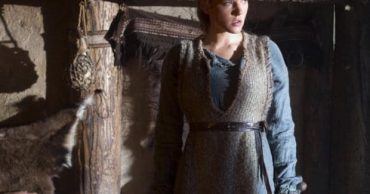

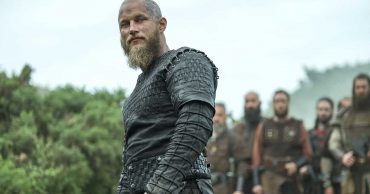
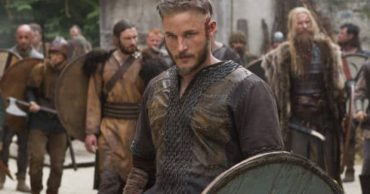
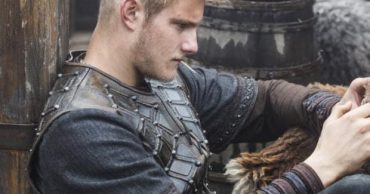
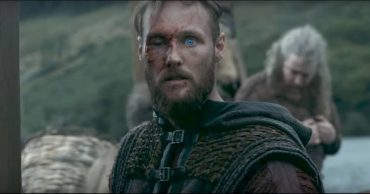
Yeah, that was a bit of a strange decision. But given that Athelstan isn’t much of a military commander, it made some sense for him to remain to lead those warriors.